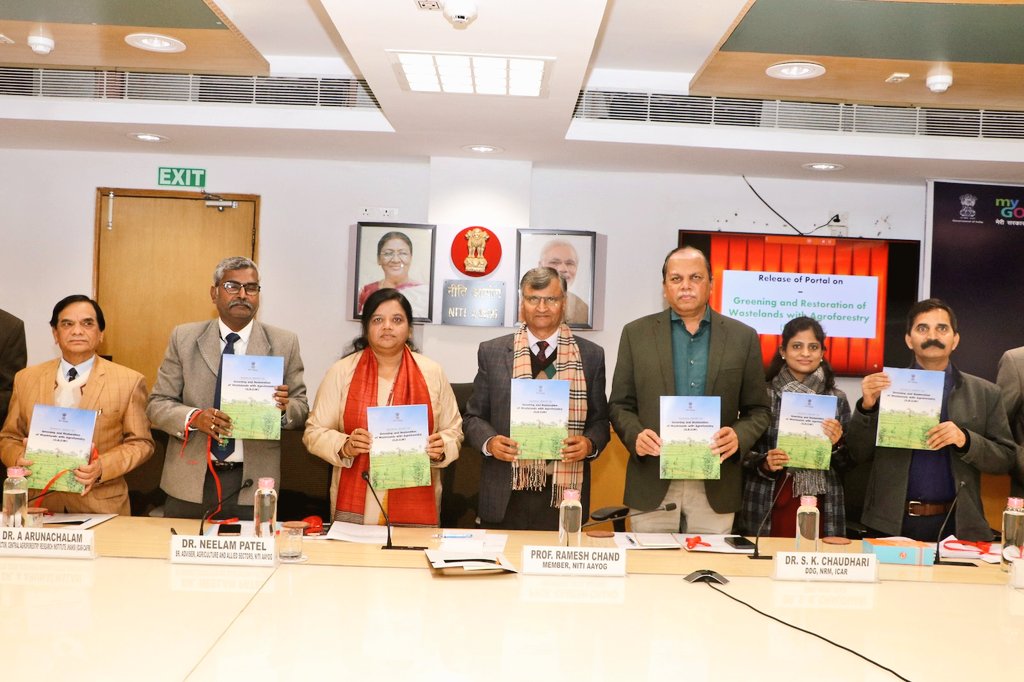New Delhi: In a significant move towards sustainable land use and environmental conservation, the Greening and Restoration of Wasteland with Agroforestry (GROW) report and portal were officially launched today by Prof Ramesh Chand, Member, NITI Aayog, at the NITI Aayog headquarters.
The GROW initiative, a collaborative effort led by NITI Aayog, brings together multiple institutions and utilizes advanced technologies such as remote sensing and Geographic Information System (GIS) to assess the suitability of agroforestry across all districts in India. The initiative aims to transform underutilized areas, particularly wastelands, into productive agroforestry zones.
A key outcome of the project is the development of an Agroforestry Suitability Index (ASI) using thematic datasets, allowing for national-level prioritization. The report provides detailed state-wise and district-wise analyses, offering valuable insights for government departments and industries involved in greening and restoration projects.
The newly launched “Greening and Restoration of Wasteland with Agroforestry (GROW)-Suitability Mapping” portal, accessible at Bhuvan, provides universal access to state and district-level data. As of now, agroforestry covers 8.65% of India’s total geographical area, equivalent to approximately 28.42 million hectares.
Prof Ramesh Chand emphasized the importance of promoting agroforestry for reducing the import of wood and wood products, carbon sequestration to combat climate change, and addressing the sub-optimal use of arable land. He highlighted the potential benefits of converting fallow land and culturable wastelands into productive spaces through agroforestry, foreseeing long-term advantages and the promotion of space technology in agriculture.
During a panel discussion, experts including Dr. SK Chaudhari, Dr. A Arunachalam, Dr. R Ravi Babu, Dr. Ravi Prabhu, and Dr. Rajiv Kumar discussed the significant role of the portal in various government programs aimed at promoting agroforestry and enhancing extension activities. The collaborative efforts align with the government’s commitment to restore 26 million hectares of degraded land by 2030, creating an additional carbon sink of 2.5 to 3 billion tonnes of carbon dioxide equivalent.
In the Union Budget for the fiscal year 2022-23, the Government of India underscored the promotion of agroforestry and private forestry as a priority, recognizing the importance of these practices in addressing issues such as increased build-up areas, degraded land, and imbalanced resources.
India, a pioneer of the National Agroforestry Policy in 2014, aims to enhance productivity, profitability, and sustainability through agroforestry, aligning with global commitments like the Paris Agreement, Bonn Challenge, UN Sustainable Development Goals, United Nations Convention on Combating Desertification (UNCCD), Doubling Farmers Income, Green India Mission, and more. The GROW initiative marks a crucial step towards achieving these objectives, ensuring a greener and more sustainable future for the nation.





